Complete Guide to Financial Planning and Analysis in South Africa
Complete Guide to Financial Planning and Analysis in South Africa
Running a business in South Africa can feel like riding a rollercoaster. The ups and downs of the economy, changes in regulations, and unexpected challenges make it tough to stay on track. But there's a way to turn these challenges into opportunities: smart financial planning and analysis (FP&A).
Think of FP&A as your business's GPS. It helps you see what's coming, plan for it, and stay on course. In South Africa, where things can change quickly, having a strong FP&A process is not just helpful—it's crucial.
This guide will show you where to start and what to keep in mind when it comes to your company's finances. Anthony Wilson, Operations Director of KPI Management Solutions weighed in with tips to help your business become more resilient and help you grow, no matter what comes your way.

Importance of Financial Planning and Analysis (FP&A) in South Africa
In South Africa, where economic conditions can change rapidly, the ability to forecast and plan with precision is invaluable. FP&A helps businesses:
- Anticipate and manage risks associated with currency and market volatility.
- Align financial goals with overarching business strategies.
- Navigate the complex tax and regulatory landscape.
Section 1: Understanding the Basics of FP&A
Financial Planning and Analysis (FP&A) refers to the set of processes and procedures used by an organisation to manage and align its financial goals with its strategic objectives.
Key Components of Effective FP&A
- Data Integration and Management: Consolidating data from diverse sources into a unified platform is crucial for accuracy and timeliness in decision-making.
- Budgeting and Forecasting: Regular and systematic budgeting combined with realistic forecasting allows businesses to prepare for future financial needs and challenges.
- Financial Reporting: Transparent and compliant reporting is essential not just for internal assessments but also for maintaining investor confidence and meeting regulatory requirements.
- Scenario Analysis: The ability to simulate various economic and business scenarios helps companies in South Africa prepare for possible changes in their operational environment.
Section 2: Economic and Regulatory Environment in South Africa
South Africa's economy, the second-largest in Africa after Nigeria, is highly diversified, encompassing key sectors such as mining, agriculture, finance, energy, manufacturing, and tourism. The nation is renowned for its substantial mineral resources, being a major producer of platinum, gold, and chromium.
In the wake of the May 2024 general elections, which resulted in the African National Congress (ANC) losing its parliamentary majority for the first time since 1994, a Government of National Unity (GNU) was formed, comprising the ANC, Democratic Alliance (DA), Inkatha Freedom Party (IFP), and Patriotic Alliance (PA). This coalition has introduced a new era of political collaboration aimed at addressing longstanding economic challenges.
Post-election, the South African economy has shown signs of resilience and optimism:
- Credit Rating Outlook: Standard & Poor's upgraded South Africa's credit rating outlook from "stable" to "positive," citing improved political stability and the coalition government's commitment to accelerated economic reforms and increased private investments.
- Reuters
- Currency Strength: The South African rand appreciated by 0.52% to trade at 18.12 against the US dollar, following the positive credit rating outlook.
- Reuters
- Unemployment Rate: The unemployment rate decreased to 32.1% in the third quarter, with the number of employed individuals increasing by 294,000 to 16.9 million, marking the largest quarterly rise since the third quarter of 2023.
- Citizen
Despite these positive developments, challenges persist. The government has reduced its annual GDP growth target from 1.3% to 1.1%, acknowledging significant economic hurdles. Tax revenues have fallen short by R22.3 billion for the current fiscal year, and government debt is projected to increase markedly.
In summary, while South Africa's economy continues to face structural challenges, the post-election political stability and commitment to reforms have fostered a more optimistic economic outlook. The coalition government's efforts to implement structural reforms and attract private investment are pivotal in sustaining this positive trajectory.
Key Economic Indicators Relevant to FP&A
When considering Financial Planning and Analysis (FP&A) in South Africa, several key economic indicators are particularly relevant:
- GDP Growth Rate: This indicator helps businesses understand the overall economic environment, influencing strategic investment and operational decisions.
- Inflation Rate: Essential for financial planning as it affects purchasing power and cost management.
- Exchange Rates: Particularly important in South Africa due to its impact on import and export activities.
- Interest Rates: Set by the South African Reserve Bank, impacting loan affordability and investment returns.
These indicators are vital for FP&A professionals to forecast future trends, prepare financial models, and align strategic plans with economic realities.
Regulatory Framework Affecting Financial Planning
Tax Regulations
South Africa has a well-established tax regime governed by the South African Revenue Service (SARS). Key taxes include:
- Corporate Income Tax: A flat rate of 28% for companies.
- Value Added Tax (VAT): Generally set at 15%, applicable to most goods and services.
- Capital Gains Tax: This applies to the disposal of assets, with rates varying based on the nature of the taxpayer.
Understanding these taxes is crucial for effective financial planning and compliance.
Financial Reporting Standards
South Africa has adopted International Financial Reporting Standards (IFRS) for financial reporting purposes, ensuring transparency, accountability, and comparability of financial statements. Some entities also use South African Generally Accepted Accounting Practice (SA GAAP), especially those not mandated to follow IFRS. Compliance with these standards is crucial for accurate financial planning and analysis, as it affects how financial outcomes are reported and interpreted.
Compliance and Governance Issues
Compliance with regulatory frameworks is critical in South Africa.
Here's why:
- King IV Report on Corporate Governance: This report provides guidelines on good corporate governance practices that promote ethical leadership, sustainability, and corporate citizenship. Companies are expected to integrate these practices into their strategic planning and operations.
- Protection of Personal Information Act (POPIA): This act regulates how personal information must be processed, affecting companies that collect and handle customer data. Financial planning must consider the costs and processes associated with compliance to avoid penalties.
- Broad-Based Black Economic Empowerment (B-BBEE): Companies are encouraged to meet certain empowerment targets as part of their corporate strategy. FP&A professionals must factor in the financial impacts of B-BBEE compliance, including potential benefits like tax rebates and business opportunities from government contracts.
Each of these regulatory and compliance issues can influence financial planning and analysis in South Africa, making it imperative for FP&A professionals to stay informed and adapt their strategies accordingly to navigate the complex economic and regulatory landscape effectively.

Section 3: Tools and Technologies in FP&A
In the rapidly evolving world of finance, Financial Planning and Analysis (FP&A) professionals in South Africa, as well as globally, rely heavily on a suite of tools and technologies to streamline processes, enhance accuracy, and facilitate strategic decision-making.
This section explores the traditional and modern tools used in FP&A, highlighting popular software and platforms, and discussing the growing role of big data and analytics.
Traditional FP&A Tools
- Spreadsheets (e.g., Microsoft Excel): Historically, spreadsheets have been the backbone of financial analysis and budgeting. They are flexible, widely available, and allow for detailed data manipulation and visualization.
- Financial Modelling Software: Various best-of-breed tools provide advanced capabilities for financial modelling, risk analysis, and scenario planning.
Modern FP&A Tools
As the demands and complexity of financial data increase, more sophisticated tools and technologies are adopted:
- Enterprise Resource Planning (ERP) Systems: ERP systems integrate various functions such as accounting, procurement, project management, and HR into a single system. Popular ERPs like SAP and Oracle are widely used in South Africa, enabling real-time data processing and reporting.
Specialized FP&A Software: Advanced FP&A platforms like Prophix, Anaplan, and IBM Planning Analytics offer cloud-based solutions that support budgeting, forecasting, and performance reporting. These tools facilitate collaborative planning and can integrate with other data systems to provide a holistic view of financial performance.
Business Intelligence (BI) Tools: Tools like Power BI, Tableau, and Qlik Sense help FP&A professionals create dynamic dashboards and visualizations. These tools can pull data from various sources, providing insights and trends that are critical for strategic planning.
Section 4: Best Practices in Financial Planning
Steps in Creating Effective Financial Plans
1. Data Collection
- Gather Historical Data: Collect financial data from previous periods to understand trends, seasonality, and financial health.
- Obtain Current Data: Include current financial statements, cash flow details, and other relevant financial metrics.
- Market and Industry Data: Research market trends, competitor analysis, and industry benchmarks that could influence financial outcomes.
- Stakeholder Input: Collect insights from various departments (sales, marketing, HR, etc.) to ensure all relevant costs and revenue streams are considered.
2. Data Analysis
- Financial Ratios and Metrics: Calculate key financial ratios (like ROI, debt-to-equity, etc.) to assess financial stability and efficiency.
- Trend Analysis: Identify patterns in historical data to forecast future financial performance.
- Cost Analysis: Examine fixed and variable costs to identify areas for cost reduction and efficiency improvements.
- Profitability Analysis: Analyze profit margins and other indicators to determine the most and least profitable areas of the business.
3. Scenario Planning
- Best-case Scenario: Develop financial projections based on optimistic outcomes, such as higher sales volumes or lower costs than expected.
- Worst-case Scenario: Prepare for potential challenges by considering outcomes like economic downturns or increases in production costs.
- Most Likely Scenario: Create a plan based on the most probable future conditions, using realistic assumptions based on data analysis.
- Contingency Plans: Outline actions to take in response to unexpected events or shifts in the market.
4. Importance of Alignment with Strategic Goals
- Strategic Objectives: Ensure that the financial plan supports the overarching strategic goals of the organization, such as market expansion, product development, or profitability targets.
- Resource Allocation: Align budget allocations with strategic priorities, ensuring that resources are efficiently distributed to support key business initiatives.
- Performance Metrics: Set financial performance metrics that directly contribute to strategic goals, facilitating monitoring and evaluation.
5. Tips for Maintaining Flexibility in Plans
- Regular Reviews and Updates: Schedule periodic reviews of the financial plan to adapt to changes in the business environment or internal operations.
- Reserve Funds: Maintain a contingency fund to handle unexpected expenses or investment opportunities.
- Flexible Budgeting: Use flexible budgeting techniques that can adjust for variations in revenue or operating costs.
- Stakeholder Feedback: Encourage ongoing feedback from stakeholders to refine financial planning processes and adapt to new information or strategic shifts.
An effective financial plan is not just a financial document; it's a strategic tool that guides a company through its fiscal responsibilities and business aspirations. By meticulously collecting and analyzing data, engaging in detailed scenario planning, aligning financial goals with strategic objectives, and maintaining flexibility, companies can create robust financial plans that propel them towards long-term success. These steps ensure that the financial planning process is comprehensive, forward-thinking, and adaptive to changing business dynamics.

Section 5: Conducting Effective Financial Analysis
Techniques for Effective Financial Analysis
- Ratio Analysis
Ratio analysis involves using key financial ratios to assess a company's financial health, performance, and trends.
Common ratios include:
- Liquidity Ratios (such as Current Ratio and Quick Ratio) measure a company's ability to meet short-term obligations.
- Profitability Ratios (like Gross Profit Margin, Operating Margin, and Return on Equity) assess how well a company uses its resources to generate earnings.
- Leverage Ratios (such as Debt-to-Equity Ratios) evaluate the level of a company's debt relative to its equity, indicating financial stability.
Example: A South African retail company, such as Shoprite, might use profitability ratios like the operating margin to measure its efficiency in controlling costs relative to its revenue, crucial for assessing performance in the competitive retail sector.
2. Trend Analysis
Trend analysis looks at data points collected over time to identify patterns or trends that can help predict future performance.
- Financial Performance Trends: Examining revenue growth, expense trends, and profit margins over multiple periods.
- Industry Comparisons: Comparing these trends to industry averages to gauge how well the company is performing against its peers.
Example:Sasol, a major player in the chemical and energy sector in South Africa, may use trend analysis to monitor fluctuations in commodity prices and their impact on profitability, helping them to strategize around production and pricing.
3. Variance Analysis
Variance analysis compares actual results to budgeted or forecasted results, identifying discrepancies (variances) and their causes.
This analysis is divided into:
- Favorable Variance: Where actual results are better than expected (e.g., higher revenue or lower costs).
- Unfavorable Variance: Where actual results are worse than expected (e.g., lower revenue or higher costs).
Example: Telkom SA, a leading telecommunications provider in South Africa, might use variance analysis to monitor discrepancies in expected versus actual customer growth rates or service delivery costs, allowing them to adjust marketing strategies or operational efficiencies.
4. Case Studies of Successful Financial Analysis in South African Companies
- MTN Group: MTN has leveraged financial analysis to expand its mobile network operations across Africa. By using ratio analysis, they have managed their capital structure effectively, ensuring robust returns on equity which has been crucial for funding expansion projects.
- Standard Bank: As one of South Africa's largest banks, Standard Bank uses trend analysis to monitor credit risk and asset quality over time. This proactive financial analysis has helped them mitigate risks associated with loan defaults and maintain financial health.
- Woolworths Holdings Limited: This retail giant uses variance analysis to manage its extensive inventory and control operational costs effectively. By comparing actual sales and stock levels against forecasts, Woolworths can adjust its procurement strategies to align with consumer demand trends, reducing waste and improving profitability.
These techniques, when implemented effectively, can provide deep insights into a company’s operational efficiency, financial stability, and long-term strategic planning. South African companies that integrate these analytical methods into their regular business practices often find themselves better equipped to make informed decisions and adapt to dynamic market conditions.

Section 6: Challenges in FP&A in South Africa
Common Challenges Faced by Financial Analysts in South Africa
- Economic Volatility
South Africa's economy can be highly volatile, influenced by both domestic factors like changes in government policies and international trends like commodity prices. This volatility can affect everything from inflation rates to consumer spending.
- Political Instability
Political uncertainty can impact economic policies, regulatory environments, and investor confidence. Changes in leadership or policy directions can swiftly alter business conditions and economic forecasts.
- Exchange Rate Fluctuations
As an emerging market, South Africa's currency, the Rand (ZAR), is susceptible to significant fluctuations. This affects not only international trade but also the valuation of foreign earnings and the cost of imported goods.
Strategies to Overcome These Challenges
1. Enhanced Risk Management
- Diversification: Financial analysts can recommend diversifying investments across various sectors and geographies to mitigate risks associated with economic and political instability.
- Hedging: Utilizing financial instruments to hedge against exchange rate risks, such as futures and options, can protect against unfavourable shifts in currency values.
2.Robust Scenario Planning
- Stress Testing and Scenario Analysis: Regularly testing financial models against a range of scenarios can prepare organizations for unexpected changes. This involves assessing the potential impacts of various economic conditions, political upheavals, or drastic exchange rate movements.
- Flexible Financial Modeling: Developing adaptable financial models that can quickly incorporate changes in economic forecasts or market conditions allows businesses to respond swiftly and effectively.
3. Constant Monitoring and Rapid Response Systems
- Real-Time Data Analysis: Implementing tools that provide real-time economic and financial data can help analysts stay ahead of market trends and adjust forecasts and strategies promptly.
- Establishing Quick Response Teams: Teams dedicated to responding to sudden economic or political changes can enable organizations to adjust operations, finance, and strategies at a moment's notice.
4. Educational and Informative Communication
- Regular Updates: Keeping stakeholders informed about potential risks and the steps being taken to mitigate them can maintain trust and confidence.
- Training and Development: Continuously upgrading the analytical skills and tools at the disposal of financial analysts ensures they are equipped to deal with an evolving economic landscape.
5. Strengthening Governance and Compliance
- Adherence to International Standards: Ensuring compliance with international financial reporting and governance standards can help mitigate some of the uncertainties that come with local political instability.
- Robust Internal Controls: Strong internal controls and compliance mechanisms reduce the risk of disruptions and ensure stability within the organization.

Section 7: Future Trends in FP&A
The field of Financial Planning and Analysis (FP&A) is continuously evolving, shaped by technological advancements, shifts in business practices, and changing economic landscapes. Here are some key future trends that are likely to shape FP&A in the coming years:
1.Increased Integration of Artificial Intelligence and Machine Learning
- Automation of Routine Tasks: AI and machine learning are set to automate more routine and time-consuming tasks within FP&A, such as data collection and preliminary data analysis. This will free up analysts to focus on more strategic aspects of their roles, such as decision support and business strategy.
- Enhanced Forecasting and Modeling: Machine learning algorithms will improve the accuracy of financial forecasts and models by analyzing large datasets and identifying patterns that are not apparent to human analysts.
2.Greater Use of Predictive Analytics
- Forward-Looking Insights: Predictive analytics will become more prevalent in FP&A, providing forward-looking insights rather than just historical analysis. This will help companies anticipate market changes, customer behaviour, and potential risks more effectively.
- Scenario Planning: Enhanced predictive tools will allow companies to create and analyze multiple scenarios to better prepare for future uncertainties.
3.More Focused Integration of Big Data
- Data-Driven Decisions: Big data will play a crucial role in FP&A by providing a richer basis for decision-making. Analysts will be able to integrate data from a wide range of sources, including IoT devices and social media, to gain a more comprehensive view of the business environment.
- Real-Time Analysis: Real-time data processing will enable more dynamic and timely decision-making processes, allowing businesses to react quickly to market changes or internal performance metrics.
4.Expansion of Collaborative Tools and Platforms
- Cloud-Based Solutions: The adoption of cloud-based FP&A solutions will increase, enhancing collaboration across different departments and geographic locations. These platforms facilitate the sharing of financial insights and strategic plans, ensuring that all stakeholders are aligned.
- User-Friendly Interfaces: Tools will become more user-friendly, enabling non-financial managers to understand and participate in the financial planning process, fostering a more integrated approach to business planning.
5.Strategic Business Partnering
- Closer Integration with Business Operations: FP&A professionals will increasingly serve as strategic partners to business units, not just as part of the finance team. This involves participating in key business decisions and strategy discussions and offering financial perspectives that directly influence operational strategies. This is also known as Integrated Planning.
- Skill Set Evolution: FP&A professionals will need to develop skills beyond traditional finance, including data analytics, strategic thinking, and communication skills to effectively partner with other areas of the business.
6.Sustainability and ESG Integration
- Sustainability Reporting: With a growing global focus on environmental, social, and governance (ESG) factors, FP&A teams will need to incorporate sustainability into financial planning and reporting. This includes assessing financial impacts related to ESG risks and opportunities.
- Regulatory Compliance: Companies will have to adapt to new regulations that require more detailed disclosures on sustainability practices and impacts, necessitating robust ESG data tracking and analysis capabilities.
The future of FP&A is set to be more dynamic, data-driven, and integrated with broader business functions. Embracing these trends will enable FP&A professionals to provide more value to their organizations, driving strategic decisions that enhance growth and resilience. The continuous evolution of technology and business practices will require ongoing learning and adaptation for FP&A teams, ensuring they remain at the forefront of business strategy and operations.

Conclusion
To summarize, robust Financial Planning and Analysis (FP&A) is essential for driving business success in South Africa. As the economic landscape of the country continues to evolve, marked by its unique challenges such as economic volatility, political instability, and currency fluctuations, the role of FP&A becomes increasingly critical.
Effective FP&A practices help organizations navigate these complexities by providing comprehensive financial oversight, enabling precise strategic planning, and fostering informed decision-making.
The integration of advanced analytical tools and technologies into FP&A processes further amplifies these benefits. By adopting best practices that incorporate the latest innovations in data analysis, predictive analytics, and financial modelling, South African companies can enhance their agility and responsiveness to changes in the market or regulatory environment.
These technologies not only improve the accuracy of financial forecasts and models but also provide deeper insights into operational efficiencies and market opportunities.
In conclusion, embracing robust FP&A practices and integrating the latest technological advancements is not just a strategy for enhancing financial management—it's a fundamental approach to achieving long-term business success in South Africa's dynamic economic environment.


